Huawei Mate 20 Pro Review : More than just a camera smartphone
The Huawei Mate 20 Pro is a flagship phone that comes packed to the gills with features that would please everyone from a casual user to a professional photographer. With its excellent cameras and battery life, you could shoot photos all day without any trouble. However, EMUI 9 needs some reshuffling of system setting elements to be more user-friendly.
In the Box
Each unit of the Huawei Mate 20 Pro comes with the standard slew of accessories in the box. There’s the USB-C wired pair of earphones, a clear TPU case, some paperwork and the SIM removal tool. The Huawei Mate 20 Pro is the first phone by the company to support the new 40Watt SuperCharge and thankfully enough, the company is bundling the new charger in the box. The Huawei P20 Pro we reviewed a few months ago supported 22W fast charging, but the phone came with a regular charger and not a Super Charger. Thankfully, that changes this time around.
Key Specifications
Processor: 7nm Kirin 980
RAM: 6GB
Storage: 128GB, expandable
Display Size: 6039 inch
Display Type: OLED
Display Resolution: 3120 x 1440 (538 ppi)
Battery Size: 4200mAh
Build and Design
The Build and design of the Mate 20 Pro feels incredibly premium. We received the Emerald Green version of the phone from Huawei, which unlike the Twilight colour, has a fine texture on the back. At first glance, the design feels like a Samsung Galaxy S9 inspiration, but that’s not something to hold against the Mate 20 Pro. The front has a curved display just like Samsung’s flagship design with extremely narrow edges. Probably the most striking physical feature (besides the colours) of the Mate 20 Pro is the camera unit. A black square housing three lenses and a flash unit have the four entities arranged in a 2×2 grid, something that Huawei calls the Matrix design. Regardless, just like the P20 Pro’s camera assembly was its unique identifier, the Mate 20 Pro’s camera unit continues the tradition.
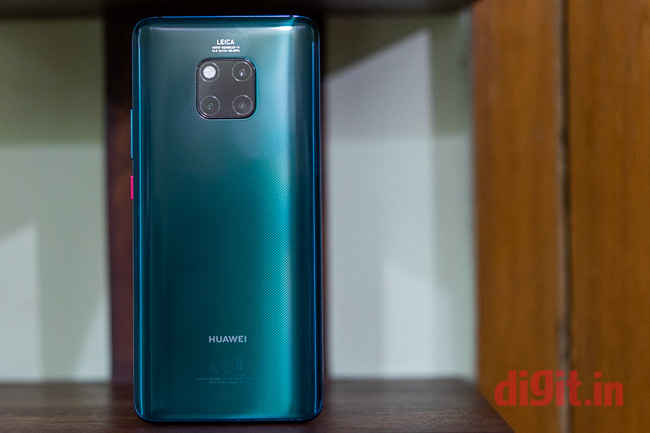
The Emerald Green variant has a nice textured finish
The Huawei Mate 20 Pro also carries an IP68 rating, and is protected by an unspecified version of Corning Gorilla Glass on the front. In any which way, we do not recommend dropping any smartphone that is made of glass. If you flip the phone, you’ll notice that the bottom side houses the SIM tray and the USB-C port. There are no speaker grilles here because the speaker is built into the charging port. This, from a design standpoint, seems pretty nice, but from a functional perspective, is limiting. When the phone is plugged in for charging, the sound does change. It doesn’t sound muffled, but if you unplug the charger while watching a video and plug it back in, you will notice a change in sound.
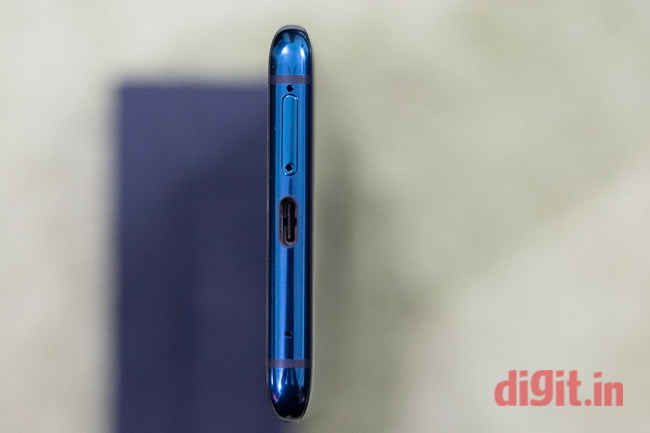
Bottom speaker is inside the USB-C port housing
When you think of the build and design of the Huawei Mate 20 Pro, it really stands out as a classy, and premium design. While the front may bear similarities to the Samsung Galaxy S9, if you really had to draw differences, well, there’s no Bixby button here so that’s good.
Display
The 6.39 inch 2K display is absolutely fantastic in almost every regard. The HDR compliance is great, but given that Netflix currently does not list the Mate 20 Pro as a supported device for HDR video, the HDR certification is of little use. The colours and contrast pop on the Mate 20’s display. On our display luminosity test, the Mate 20 Pro clocked 730 lux of maximum brightness and a minimum of two. What this means is that the Mate 20 Pro is excellent for use in both outdoor bright light and indoors in pitch darkness. After having used the phone for almost 3 weeks as a primary device, there is little to complain about the Mate 20 Pro’s display, except for the fact that for now, the HDR feature isn’t of much use. Netflix already enabled HDR for P20 Pro, so we expect that the Mate 20 Pro will be getting it soon as well.
The display offers two colour modes. Vivid and Normal. OLED displays are known for their saturated look and lately, that’s what users have been wanting as well. Those users will definitely enjoy the Vivid setting, but if like me, you’re a photographer who’s going to be shooting and editing a lot on this phone, then you’re better off switching to the Natural setting. The display settings also offer extremely fine turning of the white balance of the display. Unless you’ve got professional hardware calibration tools, we’d recommend you steer clear of this setting.
The last thing we should talk about is the notch. The cut-out in the screen has been quickly becoming an unnecessary trend. On the Mate 20 Pro though, it houses the array of sensors to enable face unlock. We’ll talk more on this in the later section, but in case you don’t like the weird cutout, you can always turn it off in the display settings. Thanks to the OLED display, the area next to the notch gets blacked out, with no discolouration.
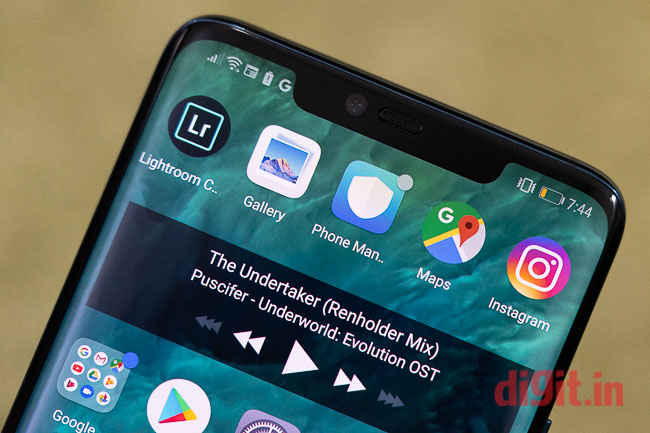
When the notch serves a purpose
If you were to get yourself the Mate 20 Pro, you wouldn’t be disappointed with the display. While there have been some early reports of discolouration around the edges of the Mate 20 Pro, this isn’t something we’ve seen on the review unit we received. We have reached out to Huawei India and asked how they will tackle the problem were it to occur here. We will update this review with their response.
Fingerprint Sensor & Face Unlock
Up until now, only Apple’s FaceID has had the accuracy and speed for seamlessly unlocking the phone and of course, being secure. Many Android OEMS tried to imitate it, albeit sacrificing security in favour of fast unlock speeds. Huawei’s implementation of using a depth sensor is a genuine alternative to Face ID, being just as fast and secure. Similarly, the in-display fingerprint sensor works reliably and fast. However, while trying to register the fingerprint, the phone keeps saying “please clean finger” after every scan, which was annoying.
Using the two unlock methods in conjunction, we were surprised to find just how well the face unlock works. In the time it takes to pick up the phone and align the finger on the fingerprint sensor, the phone is already unlocked. In order to figure out how well the fingerprint sensor works, we had to disable face unlock. The under display fingerprint sensor works surprisingly well. We casually tested the Mate 20 Pro alongside the OnePlus 6T and found the Mate come out ahead every single time. Surprisingly, both the phones were fairly good at recognizing the prints of their masters, with practically no failed recognitions. Its safe to say the Mate 20 Pro provides fast and reliable unlock methods and you are not going to miss the traditional fingerprint sensor.
Performance and UI
The boot-times of the smartphone are impressive. The Kirin 980 scores on benchmarks similar numbers to those achieved by the current generation Snapdragon 845 smartphones, shooting just barely past the OnePlus 6, which has more RAM (8GB) compared to the Mate 20 Pro (6GB). However, the 7nm processor from HiSilicon does not come close to the 7nm chip by Apple, the A12 Bionic, at least in terms of benchmark numbers. We see the Huawei Mate 20 Pro trail behind the 2018 iPhones by a considerable margin. On AnTuTu, the Mate 20 Pro scored 270947, higher than most Android phones we have tested this year. It is behind Apple’s A12 Bionic chip though. You can see the phone’s performance across various benchmarks in the images below.
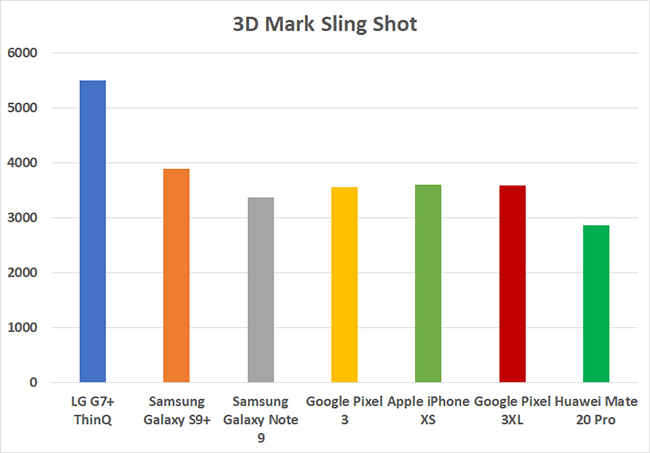
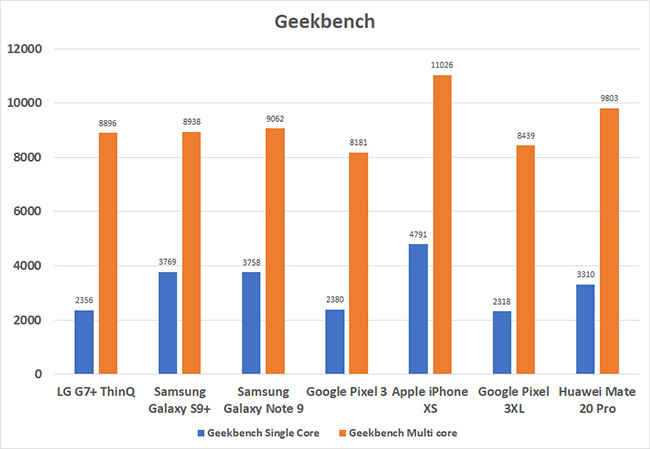
.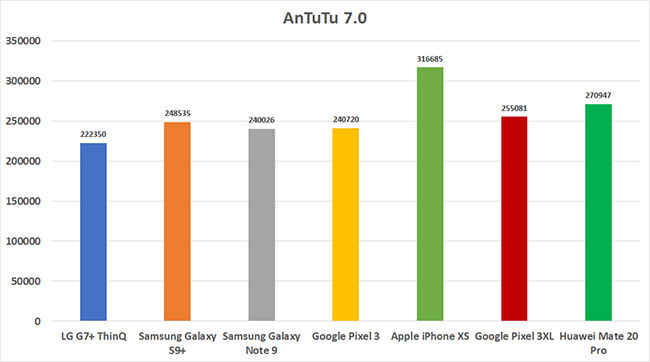
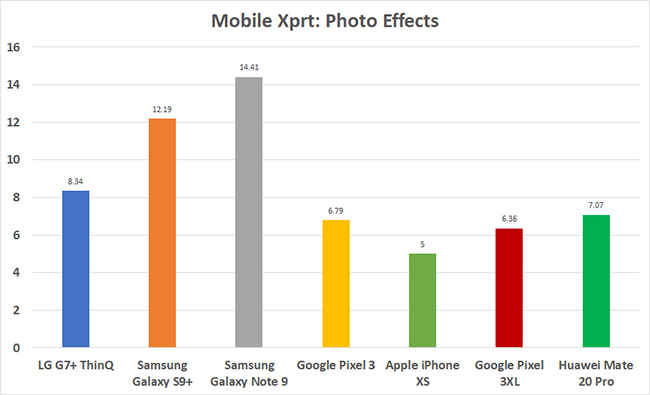
In day-to-day usage, the hardware does not disappoint in the least. Playing Fortnite and PUBG on the phone is a breeze as is Asphalt 9 and Injustice 2. Probably the most impressive has been the ability to edit the massive 40-megapixel RAW files in Adobe Lightroom Mobile with absolute ease. These RAW files are generated from the Mate 20’s camera itself and weigh about 80 megabytes each. The SoC handles processing OF these files with ease. Editing RAW files in both Lightroom and Snapseed was smooth with changes to settings appearing instantly.
Where the Huawei Mate 20 Pro leaves room for improvement is the software. Running on Android 9 based EMUI 9, there are a few nagging issues. For one, when I bring up the multi-tasking windows, the animations are not smooth, whether it is while scrolling or selecting a particular window. This deteriorates the user experience greatly. Also, the Dark UI theme is placed under battery options, not a very user-intuitive choice. It would be better served under the “Display” menu. Speaking of which, the overall settings menu organisation feels far more natural in the P20 Pro. I am not a big fan of having to always click on “more settings” or “advanced settings” to get to the options I need (such as the display colour profile option which is buried under “more display options). Last but not least, it would be amazing if the launcher supported custom icons downloaded from the Play Store. It doesn’t feel nice to have to install a third-party launcher for this minute customisation. OxygenOS allows for custom icons to be used in the interface, so I am sure EMUI could implement something similar.
Triple Camera Setup
Imaging is another highlight of the Mate 20 Pro, building upon the hit that was the P20 Pro. While many things on the surface remain the same, there are a few critical differences this time around. The Mate 20 Pro sports a 40 Megapixel primary sensor with a 26mm lens with a f/1.8 aperture. The secondary sensor is a 20 megapixel unit with a 16mm ultrawide lens and f/2.2 aperture. The third camera is an 8-megapixel shooter with an 80mm lens which sports an aperture of f/2.4. The P20 Pro’s secondary camera had a monochrome sensor, but a much larger f/1.6 aperture to let in plenty of light. Not to mention, the monochrome sensor created some wonderful images with a very fine-art appeal.
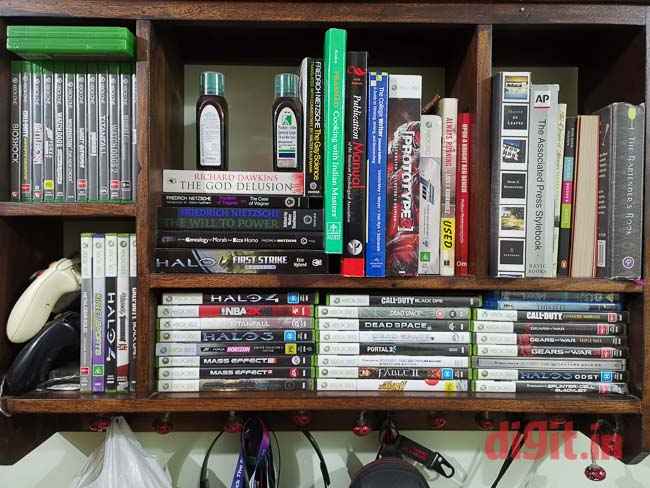
ISO 640

ISO 6400
In terms of performance, the camera is pretty fast to focus and shoot across all three lenses. When shooting in pro mode, however, there is a slight, lag across all three lenses, but only when RAW shooting is enabled. This isn’t anything to mark the Mate 20 Pro down for, as all smartphones exhibit this exact behaviour when RAW capture is enabled.
Photos taken in JPG show some loss in detail due to JPG compression, but if you really want to get the most out of this camera, the best thing to do would be to shoot RAW. When the resolution of the final file is set to 10 Megapixel, the output from the primary sensor is pixel-binned, allowing the final image to have expanded dynamic range, even without HDR mode enabled. The images resulting from all three lenses exhibit great colours and good sharpness. The ultra-wide angle lens especially has very well controlled distortion and with the addition of autofocus, it enables plenty of creative avenues. The 80mm f/2.4 lens continues to be a Huawei exclusive and is actually a boon to have if you want to shoot portraits.


excellent detail reproduction

Aperture mode produces pleasing bokeh
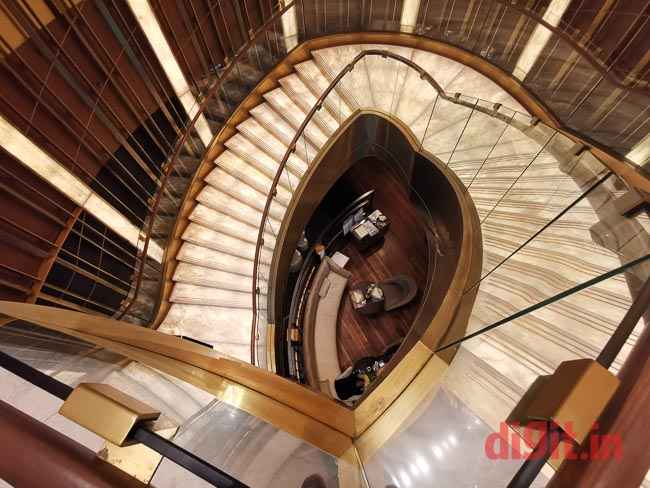
The 16mm ultra-wide lens replaces the monochrome sensor
Speaking of portraits, the Huawei Mate 20 Pro offers two modes, Portrait and Aperture. Both the modes serve the same purpose, but we’ve come to conclude that if you want to shoot people with nice, out of focus highlights, you’re better off using the aperture mode instead of portrait. Besides nicer bokeh, you also get the ability to tweak it in post.
Overall, it has to be said that the Mate 20 Pro provides one of the most versatile smartphone cameras to have come out this year. Covering a focal length between 16-80mm, there’s no other smartphone to offer this. Not only is there more on offer in terms of lenses, but the quality of the output is also at the very top of the league. If you’re a photographer or someone who relies on their smartphone heavily for taking photos, then you’re going to love the Mate 20 Pro.
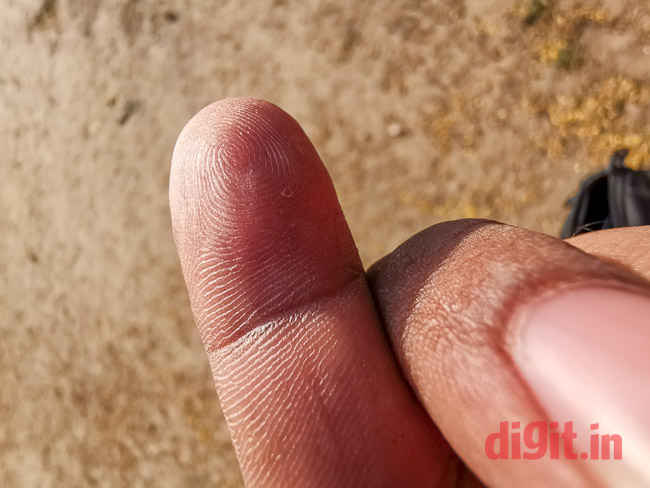
Incredibly detailed macro shots



Our Flickr Gallery has over 100 photo samples shot from the Huawei Mate 20 Pro, some straight out of the camera and some edited from their RAW counterparts and they should give you a good sense of the camera's capabilities.
Huawei offers a 24-megapixel front-facing shooter and it happens to do a decent job of taking selfies. The images could use a little more local contrast to add sharpness to the images, but it isn’t something that can’t be fixed with a quick edit. Selfies do suffer in low light though, with images developing noise fairly quickly. If you’re under good lighting conditions, you’re going to get great images from the front facing camera, but don’t expect wonders in low light.

Battery life
The 4200mAh on the Mate 20 Pro really does not disappoint. On the PCMark 8 battery test, the Mate 20 Pro lasts close to 10 hours, losing to the Galaxy Note 9 just an hour. When using the phone as my secondary, I managed to get to day number 3 on a single charge. Switching it out to my primary meant an easy day and a half of usage. Honestly, the battery didn’t matter much given the SuperCharge feature, which tops up the battery to 70 pper centwithin just 30 minutes. Typically, the phone can go from 0 to 100 in about 90 minutes, but given that the Huawei Mate 20 Pro has a 4200mAh battery, the 70 percent charge means roughly 3000mAh of juice, enough to get through the day. However, this whole thing has a catch. SuperCharge only works with the provided charger and you will have to carry it around with you everywhere since Huawei doesn’t sell spares in India yet.
Bottomline
The Huawei Mate 20 Pro is the most impressive Android phone to come out in 2018. It is packed to the gills with features, most of which work exactly as advertised. The cameras are excellent, the battery life impressive and most of all, the new Kirin 980 chipset shows that it is in no way a slouch in comparison to the Snapdragon 845 powered Android flagships. It looks and feels like a premium flagship smartphone should and doesn’t leave out any features, save for maybe the headphone jack. The settings menu could use a re-organisation as some features are not only in confusing places, but also have misleading names, but these things are easiest to fix through software updates. The main highlight of the Mate 20 Pro continues to be its excellent imaging stack which offers the highest level of flexibility and quality of output. Overall, if you do buy the Mate 20 Pro, you’re going to find yourself extremely happy the phone’s performance and output.
Swapnil Mathur
Swapnil was Digit's resident camera nerd, (un)official product photographer and the Reviews Editor. Swapnil has moved-on to newer challenges. For any communication related to his stories, please mail us using the email id given here. View Full Profile





